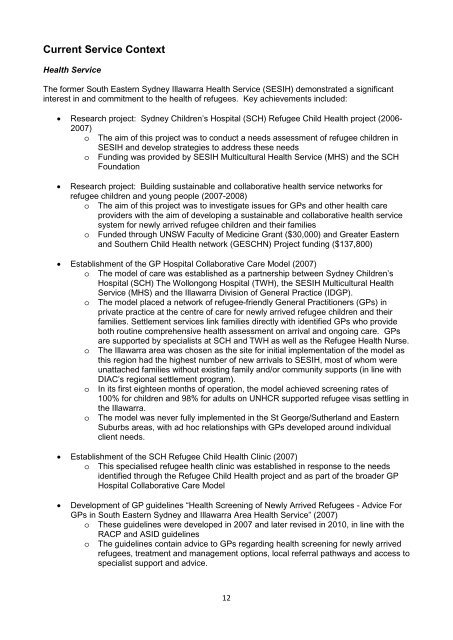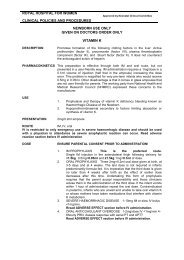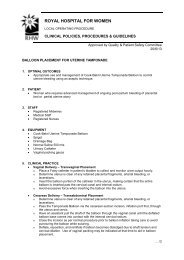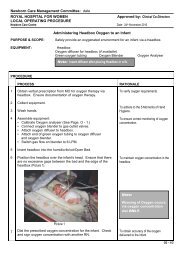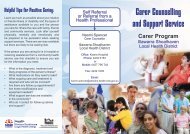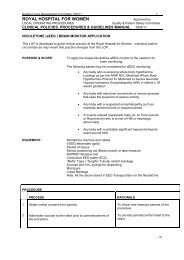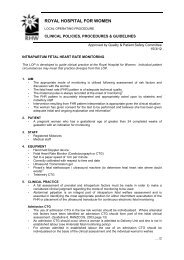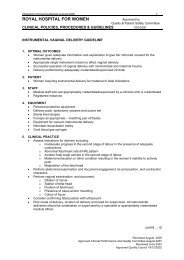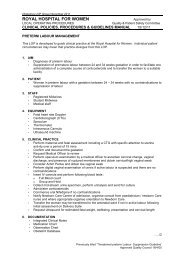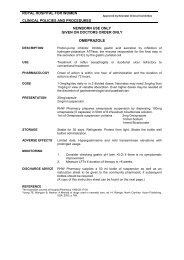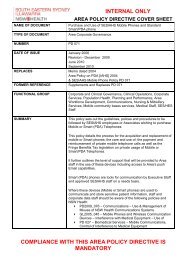South EAstern sydney LOCAL HEALTH DISTRICT REFUGEE ...
South EAstern sydney LOCAL HEALTH DISTRICT REFUGEE ...
South EAstern sydney LOCAL HEALTH DISTRICT REFUGEE ...
Create successful ePaper yourself
Turn your PDF publications into a flip-book with our unique Google optimized e-Paper software.
Current Service ContextHealth ServiceThe former <strong>South</strong> Eastern Sydney Illawarra Health Service (SESIH) demonstrated a significantinterest in and commitment to the health of refugees. Key achievements included:• Research project: Sydney Children’s Hospital (SCH) Refugee Child Health project (2006-2007)o The aim of this project was to conduct a needs assessment of refugee children inSESIH and develop strategies to address these needso Funding was provided by SESIH Multicultural Health Service (MHS) and the SCHFoundation• Research project: Building sustainable and collaborative health service networks forrefugee children and young people (2007-2008)o The aim of this project was to investigate issues for GPs and other health careproviders with the aim of developing a sustainable and collaborative health servicesystem for newly arrived refugee children and their familieso Funded through UNSW Faculty of Medicine Grant ($30,000) and Greater Easternand <strong>South</strong>ern Child Health network (GESCHN) Project funding ($137,800)• Establishment of the GP Hospital Collaborative Care Model (2007)o The model of care was established as a partnership between Sydney Children’sHospital (SCH) The Wollongong Hospital (TWH), the SESIH Multicultural HealthService (MHS) and the Illawarra Division of General Practice (IDGP).o The model placed a network of refugee-friendly General Practitioners (GPs) inprivate practice at the centre of care for newly arrived refugee children and theirfamilies. Settlement services link families directly with identified GPs who provideboth routine comprehensive health assessment on arrival and ongoing care. GPsare supported by specialists at SCH and TWH as well as the Refugee Health Nurse.o The Illawarra area was chosen as the site for initial implementation of the model asthis region had the highest number of new arrivals to SESIH, most of whom wereunattached families without existing family and/or community supports (in line withDIAC’s regional settlement program).o In its first eighteen months of operation, the model achieved screening rates of100% for children and 98% for adults on UNHCR supported refugee visas settling inthe Illawarra.o The model was never fully implemented in the St George/Sutherland and EasternSuburbs areas, with ad hoc relationships with GPs developed around individualclient needs.• Establishment of the SCH Refugee Child Health Clinic (2007)o This specialised refugee health clinic was established in response to the needsidentified through the Refugee Child Health project and as part of the broader GPHospital Collaborative Care Model• Development of GP guidelines “Health Screening of Newly Arrived Refugees - Advice ForGPs in <strong>South</strong> Eastern Sydney and Illawarra Area Health Service” (2007)o These guidelines were developed in 2007 and later revised in 2010, in line with theRACP and ASID guidelineso The guidelines contain advice to GPs regarding health screening for newly arrivedrefugees, treatment and management options, local referral pathways and access tospecialist support and advice.12


